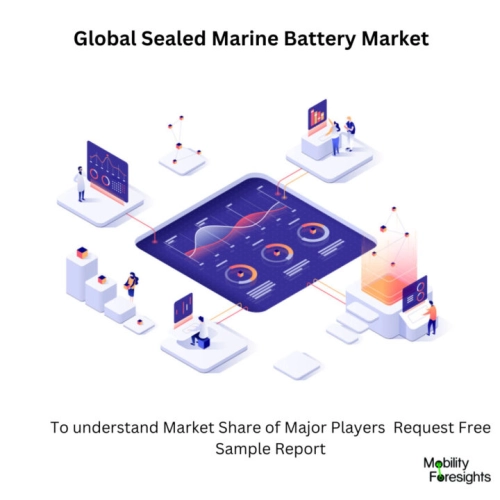
- Get in Touch with Us

Last Updated: Apr 25, 2025 | Study Period: 2023-2030
Maintenance-free batteries are referred to as sealed batteries. They have vents built into them that can typically not be removed. Standard auto or marine maintenance-free batteries are leak-proof to a certain extent but not completely. Since all batteries must allow gas to exhaust during charging, sealed batteries are not completely sealed.
Sealed rechargeable batteries don't contain a liquid that will leak out if they break, in contrast to flooded rechargeable batteries. Instead, sealed rechargeable batteries only contain liquid that is necessary for the movement of the electrolytes. These batteries are additionally referred to as maintenance-free batteries.
Compared to flooded batteries, sealed batteries have a higher power density, are spill-proof, and function well in cold temperatures. As a result, car batteries can only use sealed batteries. The AGM type of sealed battery is preferred above the gel type between the two. Unlike gel batteries, they are not truly waterproof, but they do remain so up to a 55° incline.
These batteries are closed, which makes them less completely waterproof than VLRA, AGM, and Gel battery types.Flooded batteries need to be filled with water, whereas sealed batteries don't, therefore for some facilities, their "maintenance-free" nature is appealing.

The Global sealed marine battery market accounted for $XX Billion in 2022 and is anticipated to reach $XX Billion by 2030, registering a CAGR of XX% from 2023 to 2030.
A third-generation sealed marine battery system has been developed by Leclanché SA SIX: LECN, one of the top providers of energy storage systems worldwide, to meet the demands of shipyards building fully electric and hybrid marine vessels.
The new system, which replaces Leclanché's well-liked and award-winning MRS-2 and is now powering a wide range of ferries, container ships and specialty vessels in operation all over the world, is known as the Navius MRS-3TM.
The most recent model offers substantial advancements in battery energy density, adaptability, and safety, making it the most adaptable and potent vessel electrification system yet developed with the smallest carbon footprint in the maritime industry.
| Sl no | Topic |
| 1 | Market Segmentation |
| 2 | Scope of the report |
| 3 | Abbreviations |
| 4 | Research Methodology |
| 5 | Executive Summary |
| 6 | Introdauction |
| 7 | Insights from Industry stakeholders |
| 8 | Cost breakdown of Product by sub-components and average profit margin |
| 9 | Disruptive innovation in theIndustry |
| 10 | Technology trends in the Industry |
| 11 | Consumer trends in the industry |
| 12 | Recent Production Milestones |
| 13 | Component Manufacturing in US, EU and China |
| 14 | COVID-19 impact on overall market |
| 15 | COVID-19 impact on Production of components |
| 16 | COVID-19 impact on Point of sale |
| 17 | Market Segmentation, Dynamics and Forecast by Geography, 2023-2030 |
| 18 | Market Segmentation, Dynamics and Forecast by Product Type, 2023-2030 |
| 19 | Market Segmentation, Dynamics and Forecast by Application, 2023-2030 |
| 20 | Market Segmentation, Dynamics and Forecast by End use, 2023-2030 |
| 21 | Product installation rate by OEM, 2023 |
| 22 | Incline/Decline in Average B-2-B selling price in past 5 years |
| 23 | Competition from substitute products |
| 24 | Gross margin and average profitability of suppliers |
| 25 | New product development in past 12 months |
| 26 | M&A in past 12 months |
| 27 | Growth strategy of leading players |
| 28 | Market share of vendors, 2023 |
| 29 | Company Profiles |
| 30 | Unmet needs and opportunity for new suppliers |
| 31 | Conclusion |
| 32 | Appendix |